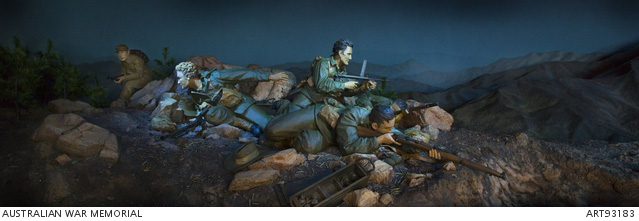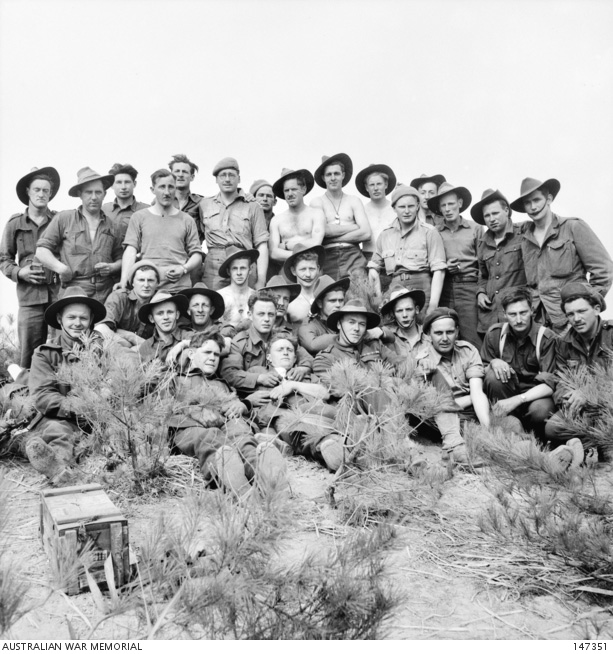Today we pause to remember the Australians who fought in the Battle of Kapyong, which took place in South Korea from 23 to 25 April 1951.
It was a significant battle of the Korean War in that it helped prevent Chinese troops from capturing Seoul. However, it was costly for the Australians, with 32 killed, more than 50 wounded and 3 taken prisoner.
The battle took place following a successful attack by a Chinese corps on a South Korean division, which left the road open to Kapyong, 60 kilometres north-east of Seoul. The 27th Commonwealth Brigade was deployed to stop the Chinese from approaching and taking the town. The brigade comprised the 3rd Battalion, Royal Australian Regiment (3RAR), Canadian and British battalions, a New Zealand artillery regiment, and an Indian field ambulance. The brigade was supported by American tanks and mortars. However, the brigade was seriously outnumbered by a much larger Chinese force.
The battle began on the evening of 23 April, but the Australians did not see action until midnight when two Chinese battalions attacked B and C Companies of 3RAR. The onslaught continued until dawn, while C and D Companies were subject to probes as the Chinese tried to locate the extent of the Australian position.
Meanwhile, a third Chinese battalion went around the left of the Australians and attacked Battalion Headquarters (BHQ) on the low ground by the Kapyong River, forcing it to withdraw. The battalion’s commander, Lieutenant Colonel Bruce Ferguson, then ordered B Company to pull back to the protection of other companies. As this was done, daylight allowed the New Zealand artillery to fire on the massed Chinese infantry now assaulting D and C Companies.
By midday, threatened with encirclement, and with a second Chinese regiment now deploying to attack it, 3RAR was withdrawn from its exposed position. Elements of the battalion had often found themselves behind enemy lines and subjected to wave after wave of Chinese attacks.
The following night, Canadian troops became the focus of Chinese attention. They held on until dawn on 25 April when the Chinese called off their attempt to break through to Kapyong. The communist advance had been halted.
Following the battle, 3RAR, along with Canadian and US forces, was awarded the United States Presidential Distinguished Unit Citation for its part in the battle.
On Kapyong Day, our thoughts are with the courageous Australians who fought in the Battle of Kapyong and all who served in the Korean War.
This year, on 25 June, will mark the 75th anniversary of the start of the Korean War. It was on that date in 1950 that North Korean forces invaded South Korea. More than 18,000 Australians served throughout the Korean War and the post-armistice ceasefire monitoring. During the war, 340 Australians lost their lives, more than 1,200 were wounded, and 30 were taken prisoner. Of those who lost their lives, 42 have no known grave.
Another 16 Australians died serving in South Korea with the ceasefire monitoring force in 1953-57, and 11 died serving in Japan with base units of British Commonwealth Forces Korea.
The Australian War Memorial has created a digitally enhanced diorama that depicts a scene from the battle. Find out more on the Memorial’s website.

Battle of Kapyong diorama created for the Korea exhibition at the Australian War Memorial, 2007. AWM ART93183

Members of No 4 Platoon, B Company, 3RAR who served with distinction as part of the 27th British Commonwealth Brigade in the Battle of Kapyong, Korea, 23 to 25 April 1951. AWM 147351